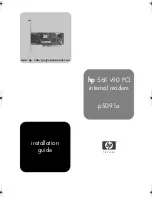
2. Description of Radiomodem Functions
2.1. Radio part
The architecture of MR400 (MR300, MR160) radio modems resolves most of the requirements placed
on a top quality user friendly radio modem with a very short switching time between receiving and
transmitting. Frequency synthesis enables operation on any random channel from a given frequency
band. The operation of the radio data transceiver module is controlled and diagnosed by the micro-
controller. The receiving part of the radio modem works with double mixing. Concentrated selectivity
is divided between both intermediate frequency levels. The first filter carries out basic channel pre-se-
lection up until attenuation which ensures the linear function of the following second mixer and interme-
diate frequency amplifier. The second filter of concentrated selectivity has an attenuation characteristic
necessary for channel selection in the used channel spacing of 25 kHz. Logic circuits, switching stations
between modes of receiving and transmitting, have high noise immunity and switch respective blocks
sequentially. This minimises most transient parasite states and optimises bandwidth during switching.
Station block modes are logically tied and switching of the station to transmitting mode is tied to the
frequency synthetiser lock, the internal temperature of the radio transceiver module and the value of
the supply voltage.
2.2. Modem part
The control microcomputer has 4 MB of FLASH memory and 16 MB of RAM memory available. The
battery, real time backup supply, detector of supply voltage failure and watch dog circuits belong
amongst the other circuits of this block. If there is a supply voltage failure the fact is recorded into
memory with the respective time data thanks to the charge stored in electrolytic capacitors. The user
therefore has information available about the time and duration of possible faults caused by power
failures. It is possible to connect equipment with signalling rates up to 115.2 kbit/s to the modem via
the RS232 data interface. RS232 interface converters are protected against overvoltage with TRANSIL
elements. A lithium battery is used for backing up in the modem part.
Note
Owing to the use of lithium batteries in the modem part it is not recommended to store them
for a period of longer than 2 years.
2.3. Supplying
The radiomodem is supplied by the DC current 13.8 V. The consumption in the quiet state is from 350
to 500 mA according to module used, the consumption at transmitting is up to 2 A. (high-performance
radio modems of type P – up to 5 A) The modem can be set in the SLEEP mode when the consumption
drops down to 2.5 mA. The return in the active mode can be done by the signal inputting on the serial
port or after a preset time.
2.4. Radio Modem Assembly
Radio modems MR400 (MR300, MR160) are special devices which require skilled assembly. All supplied
equipment is assembled by RACOM at the user’s site. For subsequent maintenance RACOM specially
trains the user’s skilled staff and as an additional aid provides them with Operating regulations for radio
data networks and MORSE Firmware – Documentation.
7
© RACOM s.r.o. – Narrowband modems – PROFI MR400, MR300, MR160
Description of Radiomodem Functions
Содержание PROFI MR400
Страница 2: ......








































